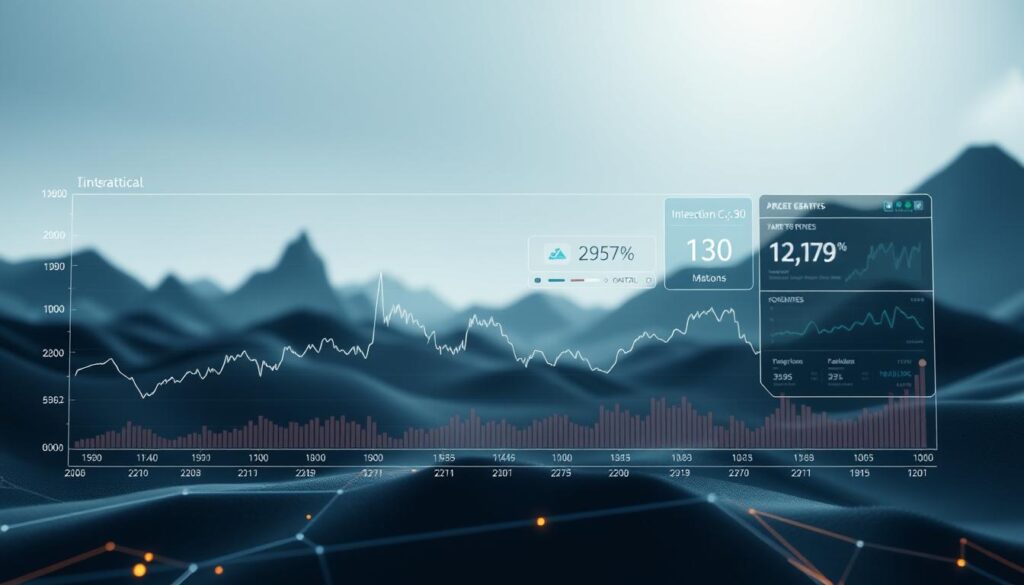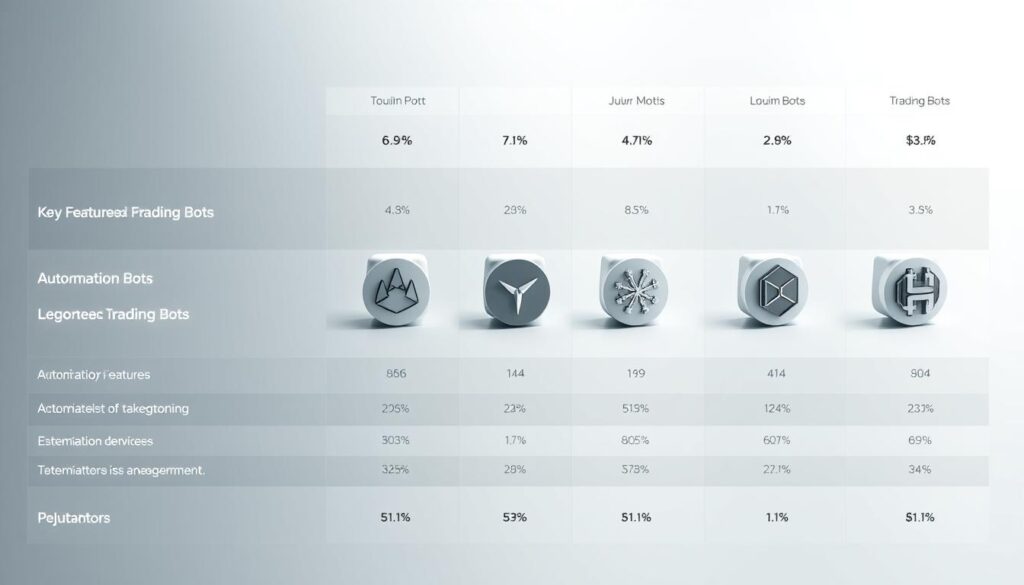Modern markets move fast, and keeping up requires tools that work while you sleep. Automated trading platforms analyze trends and execute deals using mathematical models, letting users participate around the clock without constant screen time. These systems test approaches with past market data, helping refine methods before actual funds are involved.
Leading platforms like 3Commas and Pionex simplify complex tactics such as dollar-cost averaging through intuitive dashboards. Pre-built templates and step-by-step tutorials make algorithmic strategies accessible even to those new to digital assets. Many services now integrate educational resources directly into their interfaces, reducing the learning curve.
Emotion-free decision-making stands out as a key benefit. Unlike manual trading, automated systems follow strict rules regardless of market hype or panic. This consistency helps avoid impulsive moves during price swings. A recent comprehensive review highlights how top-rated tools balance customization with simplicity for first-time users.
Key Takeaways
- Round-the-clock market monitoring captures opportunities outside normal hours
- Historical data testing minimizes risk before live implementation
- Pre-configured templates help newcomers start quickly
- Educational materials build confidence in automated approaches
- Platform choice depends on personal goals and risk comfort
As we explore specific features in later sections, remember that successful automation starts with clear objectives. The right platform matches your ambitions while providing safeguards against volatility.
Introduction to AI Crypto Trading Bots
Efficiency in volatile markets hinges on technology that makes split-second decisions. Automated systems combine preset rules with adaptive learning to manage digital assets, offering users a strategic edge. These tools evolve beyond basic scripts by analyzing patterns and adjusting tactics in real time.
What Is an AI Crypto Trading Bot?
A trading bot operates as a self-guided program that handles buying and selling using mathematical models. Unlike manual methods, it removes emotional bias—like panic selling during crashes—by sticking to predefined logic. Machine learning allows these systems to refine strategies based on historical outcomes, improving accuracy with each transaction.
Benefits of Automated Trading
Continuous operation ensures no opportunity slips through time zone gaps or late-night volatility. Bots execute trades at optimal moments, even when users focus on other priorities. This consistency prevents impulsive decisions that often derail manual strategies.
Retail traders gain access to institutional-level tools through platforms highlighted in this comprehensive guide. Features like backtesting and risk management templates help newcomers build confidence while maintaining control over their portfolios.
Understanding the Crypto Trading Market
Digital asset markets operate differently than traditional exchanges, functioning 24/7 with rapid price swings. This nonstop activity creates unique challenges for manual strategies but offers ideal conditions for systematic approaches. Three key factors define these markets: constant accessibility, unpredictable volatility, and decentralized participation across time zones.

Market Conditions and Historical Data
Automated systems thrive by recognizing four primary market phases. During uptrends, they might prioritize momentum strategies. Downtrends often trigger risk management protocols like stop-loss orders. Sideways movements could activate range-trading tactics, while sudden volatility spikes may prompt position adjustments.
Historical patterns serve as the foundation for these decisions. By reviewing years of price movements, algorithms identify recurring behaviors—like how certain assets react to news events or technical indicators. This analysis helps predict potential support zones where buying interest might emerge or resistance levels where sell-offs could occur.
New users should prioritize platforms offering real-time adaptation to shifting conditions. Some tools perform better in trending environments, while others excel during consolidation periods. Understanding these nuances helps traders select automated solutions that match their risk preferences and market outlooks.
- 24/7 operation demands constant monitoring capabilities
- Volatility requires instant response mechanisms
- Historical cycles inform future strategy adjustments
Effective systems combine live data streams with archived information, creating decision frameworks that evolve alongside market dynamics. This dual approach allows for precise execution while maintaining safeguards against unexpected shifts.
The Role of Backtesting and Strategy Validation
Validating approaches in unpredictable environments requires rigorous testing methods. Automated systems let users simulate decisions across different market scenarios using archived information. This process builds confidence while exposing potential weaknesses in planned methods.

Backtesting with Historical Data
Platforms like 3Commas enable simulation of approaches using granular timeframes—down to one-minute intervals over full market cycles. Testing against real-world conditions from 2021’s bull run or 2022’s bear market reveals how strategies withstand volatility. Users assess performance metrics like win rate and risk-reward ratios before live implementation.
| Time Frame | Purpose | Key Metric |
|---|---|---|
| 1-minute data | Short-term tactics | Execution speed |
| Daily data | Trend analysis | Consistency |
| Yearly cycles | Market regime adaptation | Drawdown control |
Refining Trading Strategies
Analysis often leads to adjustments in entry triggers or position sizing. If a stop-loss level frequently triggers during normal fluctuations, widening the margin might prevent premature exits. Successful refinements balance historical performance with forward-looking adaptability.
While simulations provide valuable insights, they can’t predict black swan events or regulatory changes. Combining multiple testing periods reduces reliance on specific market phases. Platforms offering adaptive learning features help bridge the gap between past patterns and emerging trends.
Key Features of Top-Rated Trading Bots
Successful digital asset management relies on both precision and accessibility. Leading platforms combine straightforward navigation with deep technical capabilities, letting users focus on strategy rather than software complexity.
User Interface and Ease of Use
Intuitive dashboards separate elite platforms from cluttered competitors. Clear menus and visual indicators—like color-coded risk levels—help newcomers track performance without technical jargon. Platforms such as 3Commas use drag-and-drop strategy builders, allowing adjustments to parameters like stop-loss thresholds in three clicks or fewer.
Many tools offer tiered access to features. Basic modes provide preset templates for immediate use, while advanced sections unlock granular controls as users gain confidence. This approach prevents overwhelm while maintaining growth potential.
Advanced Algorithmic Capabilities
Sophisticated systems analyze multiple data streams simultaneously, from order book depth to social sentiment trends. Machine learning components enable continuous strategy refinement, adapting to shifting market regimes without manual input.
| Feature | Benefit | Use Case |
|---|---|---|
| Multi-exchange arbitrage | Exploits price gaps | Volatile markets |
| Dynamic position sizing | Manages risk exposure | Unpredictable swings |
| Custom indicators | Tailors strategies | Niche assets |
Documentation quality often determines real-world success. Detailed tutorials and responsive support teams help users troubleshoot setup errors and optimize configurations. These resources transform complex tools into practical solutions for everyday trading needs.
Security Measures and Risk Management Essentials
Protecting digital assets demands more than passwords—layered defenses separate reliable platforms from risky ones. Robust systems use two-factor authentication and bank-grade encryption to shield accounts. Secure API connections ensure bots interact with exchanges without exposing sensitive data.

- API keys restricted to trade execution only (no withdrawal rights)
- Regular security audits by third-party firms
- Real-time activity monitoring for suspicious patterns
Risk controls act as safety nets during market storms. Set stop-loss orders to auto-sell if prices drop 10%, or cap daily losses at 5% of your portfolio. Position sizing tools prevent overexposure—never risk more than 2% per trade.
Reputable platforms like 3Commas demonstrate proper security practices. Their systems can’t transfer funds, keeping assets in user-controlled exchange accounts. Transparent companies publish audit reports and update protocols against emerging threats.
Start with conservative settings: 1% position sizes, 15% stop-loss triggers, and 24-hour trade limits. Adjust as you gain experience, always aligning parameters with your comfort level during price swings.
Comparing Popular AI Crypto Trading Bots
Selecting the right automated tool requires understanding platform strengths and community trust. This analysis explores eight market leaders through practical features and real-world experiences.

Overview of Leading Platforms
Top services cater to different needs. 3Commas stands out with backtesting features and granular strategy adjustments. Cryptohopper merges automation with social trading, letting users mirror experienced traders’ moves. Pionex offers 18 built-in strategies optimized for trending markets.
- Bitsgap: Arbitrage tools across 15+ exchanges
- Coinrule: Simple “if-then” rule creation
- HaasOnline: Advanced script customization
- TradeSanta: Grid and DCA templates
User Reviews and Feedback
Recent testimonials reveal patterns. 3Commas users praise responsive customer support during setup phases. Cryptohopper’s community highlights its portfolio rebalancing tools during volatile periods. Multiple reviews note HaasOnline’s steep learning curve despite powerful capabilities.
Look for consistent themes in feedback:
– Platforms with detailed tutorials have higher retention rates
– Systems offering free trials see more positive initial reviews
– Exchange compatibility issues surface in 23% of critical comments
Performance metrics vary by strategy type. Range-bound markets favor TradeSanta’s grid systems, while trending conditions boost Pionex’s momentum tactics. Always verify claims against third-party data from sources like independent audits.
Guide to the Best AI Crypto Trading Bot for Beginners
Choosing the right platform begins with understanding your financial roadmap. Clear objectives shape which features matter most—whether chasing quick gains or building wealth slowly. Matching tools to ambitions prevents mismatched expectations.
Investment Goals and Risk Tolerance
Define time horizons first. Short-term approaches need bots with rapid execution, while long-term plans benefit from rebalancing tools. Risk comfort determines stop-loss settings—conservative users might cap losses at 3% per trade.
Platforms like 3Commas offer adjustable risk parameters that align with personal thresholds. Test different volatility levels in demo modes before committing funds. This trial phase reveals how strategies perform under stress.
Customization Options for New Traders
Look for systems letting users customize templates without coding. Pre-built strategies for dollar-cost averaging simplify initial setup. Educational guides integrated into dashboards help refine approaches over time.
Start with basic templates, then tweak variables as confidence grows. Platforms providing real-time performance tracking encourage informed adjustments. Always prioritize tools with clear exit rules to protect capital during unexpected swings.


No comments yet